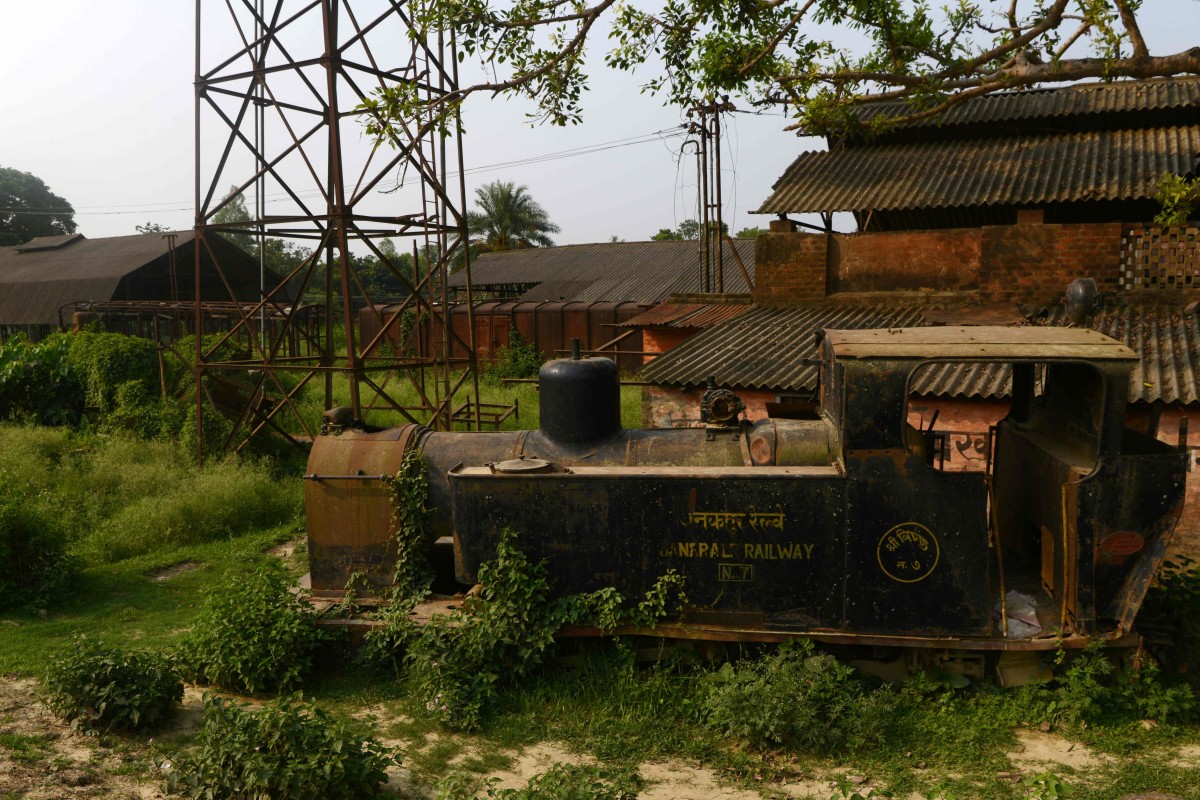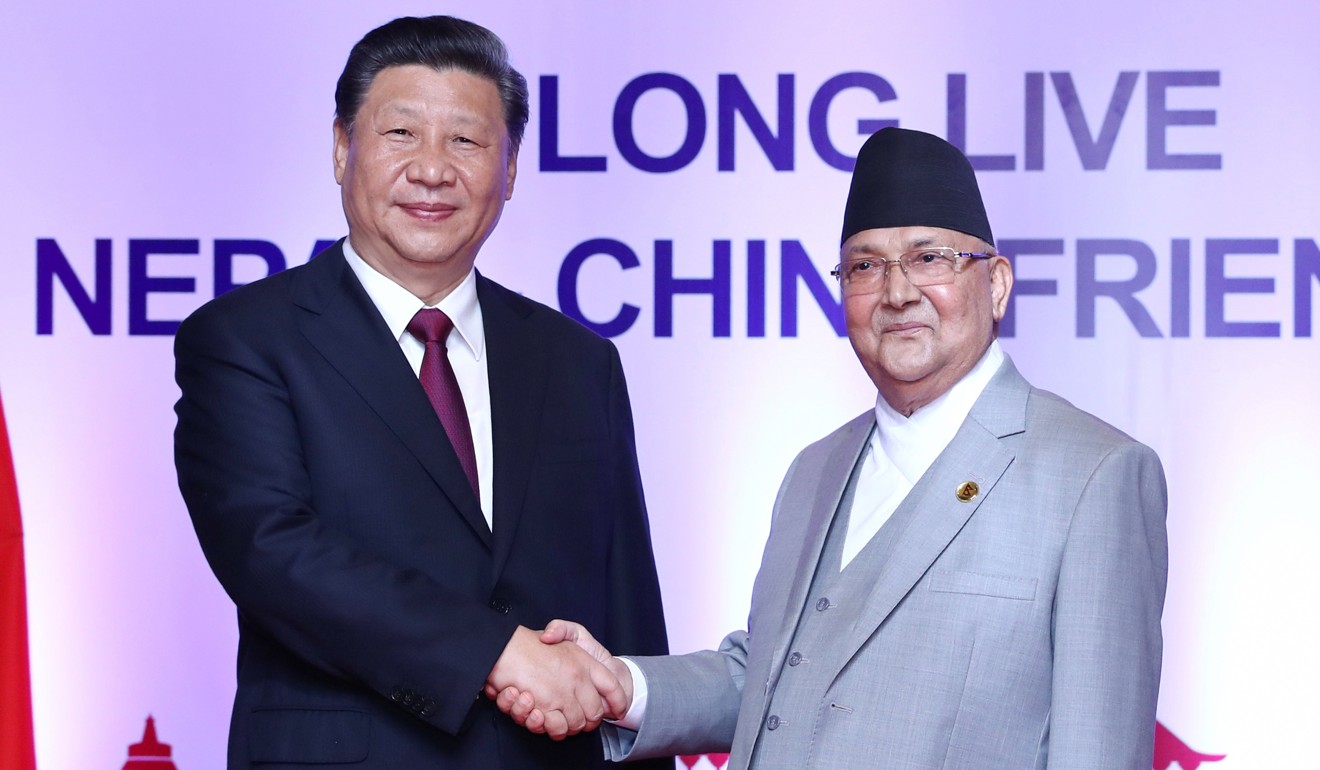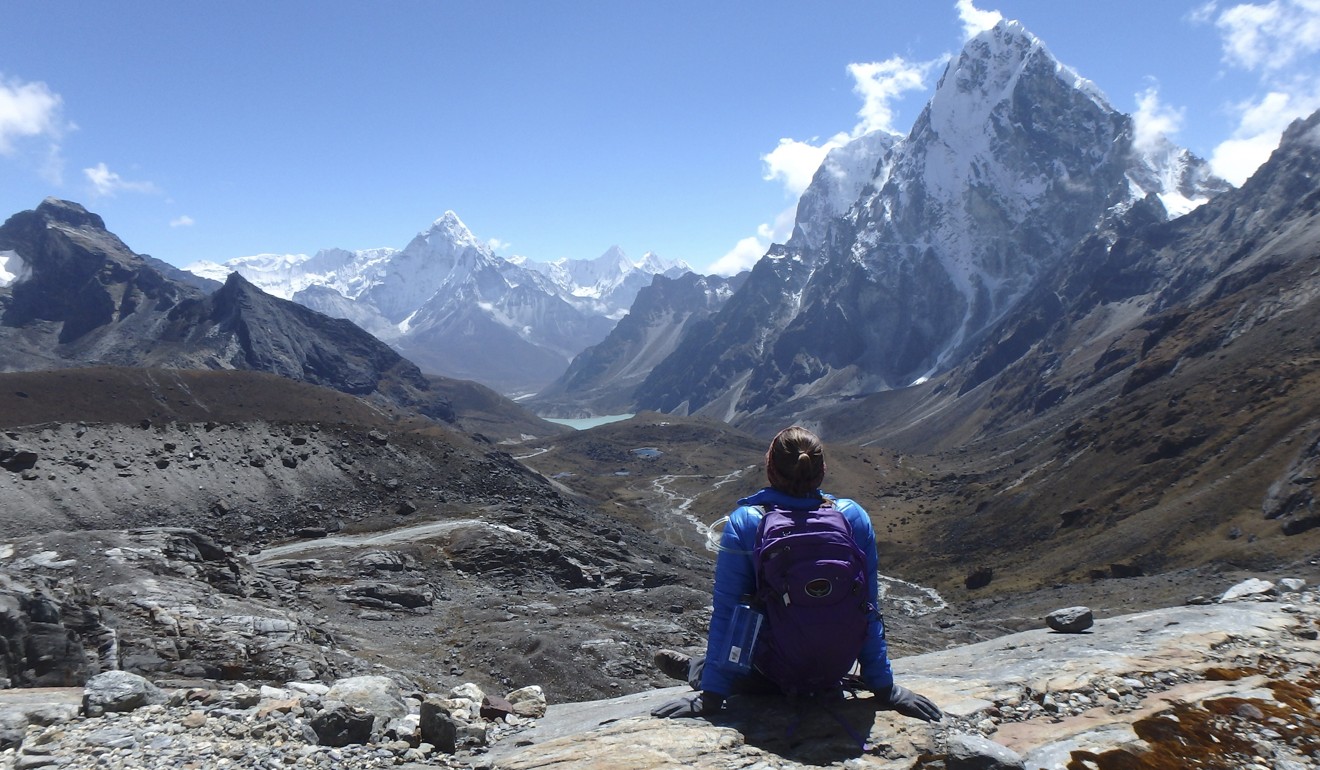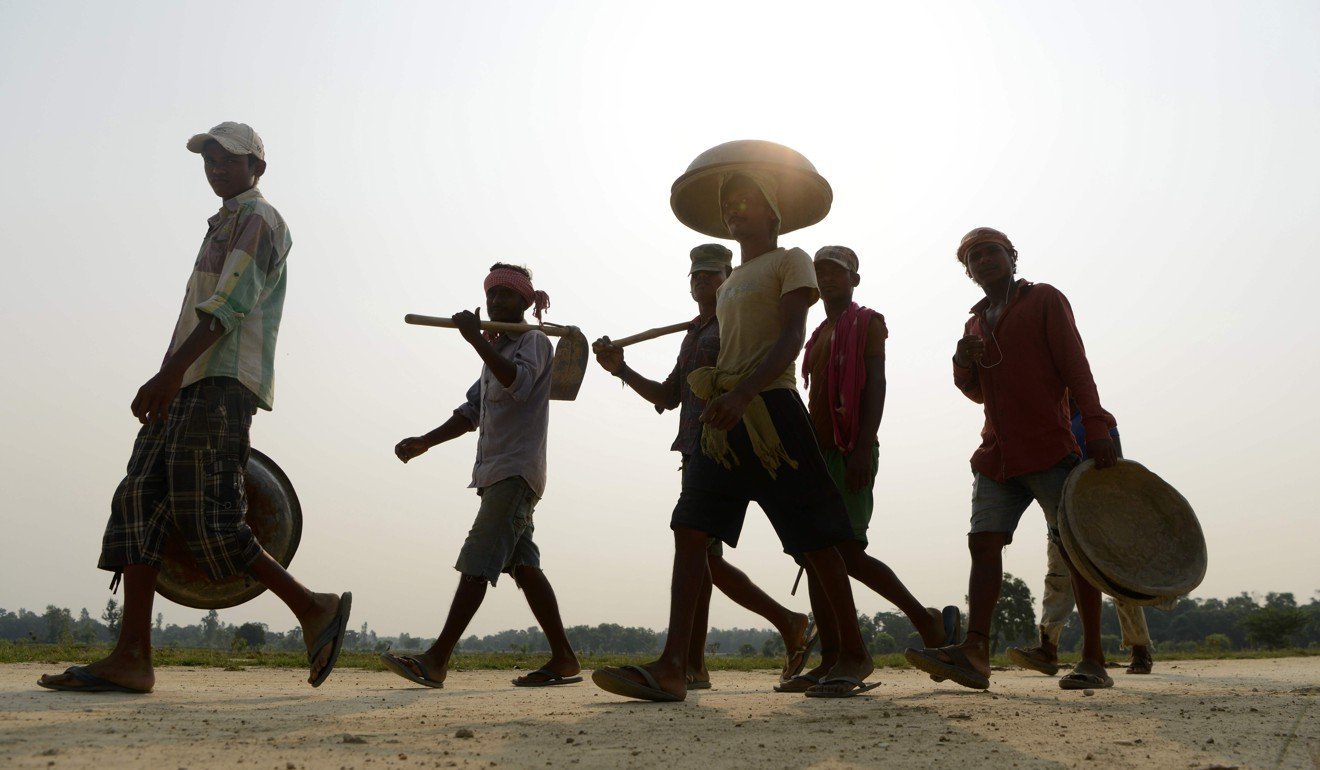- Lofty ambitions of a Himalayan railway entertained by Mao Zedong have been revived by Xi Jinping
- Even if technical and environmental problems can be overcome, Nepal faces another danger: debt

South China Morning Post, 1 Dec, 2019

The idea of a railway linking China to Nepal has captured imaginations on both sides of the border ever since Mao Zedong and King Birendra first mooted the idea in 1973. In the decades since, the dream has survived a royal massacre in which Birendra was shot to death by his own son and heir, a Maoist insurgency and decade-long civil war, an earthquake that killed 9,000 and destroyed many of Kathmandu’s most iconic monuments, and a crippling five-month trade blockade by India.Now, 45 years later, with China seeking new avenues for its Belt and Road Initiative investments and Nepal in search of a counterweight to Indian influence, the stars may finally have aligned for a project many have long derided as unfeasible.Plans to carry out an extended, detailed feasibility study into the railway project were among 20 deals signed between the two nations during Chinese President Xi Jinping’s official visit to Nepal in October, leading the project’s most ambitious backers to suggest it could be a reality by 2035 or earlier.

Under the shared vision for the project, trains would run from a terminus at Sankhu on the eastern fringes of Kathmandu to Gyirong on the Tibetan border, carrying both goods and passengers. Some have speculated the line could also be extended west to Pokhara, Nepal’s second city and its main tourism hub in the middle of the country, and south to Lumbini near the Indian border.The positives for both nations are clear: Nepal would gain a new avenue for trade and tourists, easing its reliance on neighbouring India, while Beijing would boost its belt and road plan, which has been under fire of late due to allegations its largesse in developing regional infrastructure is part of a sinister plan to entrap smaller nations in debt.SUBSCRIBE TO THIS WEEK IN ASIAGet updates direct to your inboxSUBMITBy registering, you agree to our T&C and Privacy Policy
SUPREMELY CHALLENGING
However, realising the vision will be supremely challenging. For the engineers faced with constructing a 70km railway line that will climb from 1,400 metres above sea level to around 4,000 metres, the task is shot through with difficulties.
Any route through the Himalayas will be vulnerable to landslides and earthquakes. One estimate concluded that as much as 98 per cent of the line would have to be made up of tunnels and bridges.
Nepal protesters burn Xi Jinping effigies over China’s alleged border encroachment
Then there is the cost. An initial – and by no means precise – budget indicated the railway would cost in the region of US$3 billion. Nepal is one of Asia’s poorest countries, with a GDP of just over US$28 billion as calculated by the World Bank. Financing the railway project with assistance from China – be it soft loans, a grant or some other arrangement – carries the risk of plunging Nepal into the sort of debt trap envisaged by the belt and road’s biggest critics, leaving it acutely vulnerable to pressure from Beijing.

The project could also complicate Nepal’s relationship with India, which has a history of friction with China, chiefly in Kashmir and most recently following a border dispute in 2017 at Doklam. India has long viewed Nepal as a convenient geographical and political buffer zone between it and China, and regards any suggestion of closer ties between Beijing and Kathmandu as potentially hazardous.
Doklam then and now: from British to Chinese interests, follow the money
Such considerations – along with the environmental concerns over bulldozing through one of Asia’s most fragile ecological systems – give critics ample ammunition.
“The [railway’s] supporters need to take note of certain important facts,” said Mrigendra Bahadhur Karki, executive director of the Centre for Nepal and Asian Studies.
“It’s highly controversial – with a projected cost of US$2.8 billion, the highest for a single project in Nepal – so politicians, academics, intellectuals, civil societies and individuals are divided over the issue.
“From an engineering point of view, this is probably one of the most challenging railway projects in the world when you consider the high altitude, steep slopes, complex geographical terrain, and the need for a huge amount of tunnelling. Passenger trains will even need to carry oxygen.”
POTENTIAL LIFELINE Yet local advocates – who lament the country’s patchy road and air networks – see the railway as a potential lifeline, freeing the country from dependence on trade routes through India, while in Beijing the prospect of extending the belt and road through the world’s highest mountain range would carry, in addition to its geopolitical advantages, the same sort of kudos that was attached to the completion of the Karakoram Highway in 1979.At the conclusion of his Kathmandu visit, the first by a Chinese leader this century, Xi declared: “We will develop a multidimensional trans-Himalayan connectivity network and help Nepal to realise its dream to transform itself from a landlocked country to land-linked country.”

Labourers walk near the construction area of a new railway in Janakpur, some 300km south of Kathmandu. Photo: AFP
Xi also offered his support for Visit Nepal 2020, Kathmandu’s drive to attract two million tourists to the country, pointing approvingly to the 150,000 Chinese who visited Nepal last year, many drawn by its world-class trekking and white-water rafting opportunities.Xi’s pronouncement was echoed by Zhao Gancheng, director of the Centre for Asia-Pacific Studies at the Shanghai Institute for International Studies. “An extension of the railway from Tibet to Nepal will play a crucial role in facilitating the Chinese region to integrate into regional cooperation under the belt and road,” he told Global Times.
“After the railway is completed, it will provide Tibet in southwest China with a connection to eastern coastal areas such as Shanghai, as well as Nepal and India.”
Driven by India into China’s arms, is Nepal the new Sri Lanka?
In Kathmandu, engineering professor-turned-politician Surya Raj Acharya has repeatedly trumpeted the railway project as a potential “game changer”.
“It will provide us with a steady, reliable connectivity with China for trade as well as transit,” said Acharya, a spokesman for the opposition Bibeksheel Sajha Party.
“The Chinese market is huge. Businesses in Nepal will naturally explore that market. So, in the long term, [the railway] will be economically viable.”
For its part New Delhi, rather than making any overt declaration of disquiet, has essentially relegated itself to the role of interested observer, at the same time tentatively proposing an east-west railway that would run through Nepal’s plains parallel to the international border, with a spur reaching north to Kathmandu. The idea has yet to progress beyond the drawing board.

STILL SKEPTICAL
Still, there are sceptics and they have been bolstered by a feasibility study submitted by China’s First Survey and Design Institute to Nepal’s Ministry of Physical Infrastructure and Transportation. While the report has not been published, details have emerged that highlighted its authors’ concerns over topography, weather, hydrology and tectonics.
Plans are now in hand for a more detailed study, to be conducted jointly by Nepalese and Chinese technicians, but even if this can come up with some solutions to the technical problems, it is unlikely to ease the concerns of the environmental lobby.
“The [railway] would be certain to impact the biodiversity and cultural diversity of the places it runs through,” said Hem Sagar Baral, the president of both Himalayan Nature and the Nepalese Ornithological Union.
The railway’s route would take it through the Langtang and Shivapuri national parks, between them home to vulnerable species like the red panda, snow leopard and one third of the country’s bird species. In addition to the impact on their living environments, there are fears that the railway will open a new route for wildlife smugglers.

Bleak as that prospect sounds, Baral is not too worried just yet.
“I doubt that this railway will be completed even in half a century,” he said, pointing out that the government was still struggling to complete a project started more than 25 years ago to bring drinking water from a river north of Kathmandu to the capital.
“A water project is far more important to the people of this country than riding a train. The China-Nepal Railway may be a dream project for the current government but I expect there’ll be at least 10 other governments in the next 50 years.
“Nepal is not able to maintain and run the few kilometres of railway that currently exist in the plains, so how can we run a railway in the mountains? And what resources will we have to maintain it? And how will we pay the loans back? To me, all this sounds like a disaster in the making.” ■
The article appeared in the South China Morning Post on 1 Dec, 2019
